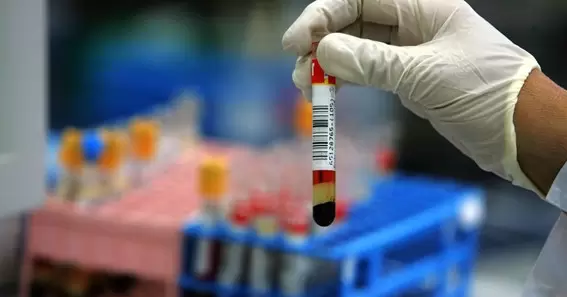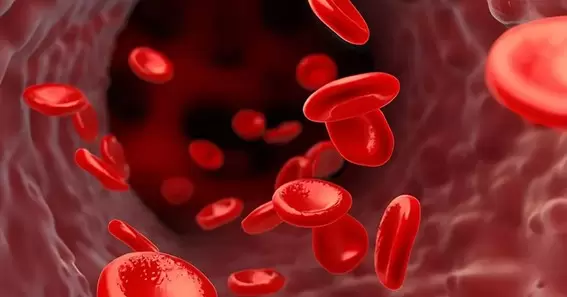Do you know what level of RDW is dangerous? A high level of red cell distribution width (RDW) that stands above the normal range of 14.5% can be concerning. This means that there is absolute variation in the size distribution of the red blood cells, which points to illnesses like anaemia, a shortage of nutrients such as iron and vitamin B12, and even diseases of bone marrow.
What Level Of RDW Is Dangerous?
RDW is Red Cell Distribution Width which is one of the flags of red blood cell indices that illustrates the variance of the size of the RBCs. Thus, increased RDW indicates that the variability in the size distribution of red blood cells is relatively higher, and this may be a pointer to more health difficulties.
Normal RDW values are usually between 11.5% and 14.5%. RDW >15% is considered to be elevated and may indicate some diseases such as anaemia, vitamin B12, folate deficiency, liver disease, etc. Extremely elevated RDW values above 20 per cent are always worthy of a proper medical assessment to identify the root of the problem and possible remedial action. Now you know the answer for what level of RDW is dangerous.
Different Levels Of RDW

Certainly, here is a detailed description of different RDW levels. Read on to learn more about different levels and understand what level of RDW is dangerous.
Normal RDW Range:
RDW Concentrations Commonly Vary Between 11 And 35 Percent. 5% To 14.5% Of The Total In A Normal Person.
Elevated RDW (Above 15%):
It indicates a higher anisocytosis rate in red blood cells. The list may include anaemia, various vitamin deficiencies, chronic conditions for patients, or even transmitted diseases.
High RDW (Above 18%):
It is more common in specific kinds of anaemia, for example, iron deficiency anaemia or megaloblastic anaemia. A person can report inflammation, liver problems, or a disease of the bone marrow.
Very High RDW (Above 20%):
It is considered dangerously high and could be an indication of a shortage of red blood cells, certain vitamin or mineral deficiencies, or the progression of chronic illnesses. Also results in disorders such as chronic kidney disease and heart failure, as well as higher cardiovascular morbidity.
Implications Of Elevated RDW:
An RDW above this cut-off mark should be investigated to identify the root cause of the increased RDW. Sometimes it is seen with other deranged blood indices like hemoglobin or mean corpuscular volume that are also helpful in making the diagnosis. These can be cancers or severe infections, to mention but a few conditions that are likely to be related to a high RDW.
Keep reading to understand better what level of RDW is dangerous.
Various Underlying Diseases Caused By RDW

Here are the various diseases caused by RDW:
Link With Cardiovascular Diseases:
High RDW is associated with more cardiovascular events, including acute myocardial infarction or the duck. This might be explained by the existing inflammation that is found to determine the lifespan of the red blood cells and erythropoiesis.
Inflammation And RDW:
It is important to note that inflammation and certain diseases can increase RDW by interfering with the creation of new red blood cells or by shortening the lifespan of those cells, such as in rheumatoid arthritis or inflammatory bowel disease.
Clinical Action:
Doctors usually prescribe further investigations (tuberculin skin test, routine blood panel including CBC, invariant iron, vitamin levels, etc.) to get to the bottom of it. Management requires dietary changes, additional nutrients in the diet, or the quick management of chronic diseases or inflammation. It can be seen that awareness regarding RDW and the need for frequent checking for RDW levels are imperative for the early diagnosis and treatment of various health complications, thereby underscoring the significance of blood tests in the clinical setting.
Conclusion
What level of RDW is dangerous? Red cell distribution width (RDW) levels above the normal range of 11 percent could be a continuous and potential biomarker for female musicians with infertility. 5% to 14. It was also found that 5% can embody different diseases and illnesses. An RDW of over 15% indicates an increased distribution of red blood cell sizes and is indicative of anaemia, nutrient deficiency, liver impairment, and bone marrow disorders. RDW has extremely high values that should be more than 20 percent, and these cases need to be investigated to determine the cause and treated accordingly.
FAQ
What Does The Abbreviation RDW Stand For Concerning Blood Test Results?
RDW is an acronym for Red Cell Distribution Width, which is the subsequent measurement of the extent of red blood cell sizes in a population of blood samples processed. It is one of the subtests of the complete blood count (CBC) test, which is frequently applied as a haemorrhage diagnosis tool.
What Is The Normal Range For RDW?
RDW commonly varies between the extremes of 11 and 28 per cent in people with no affliction or illness. 5% to 14.5%.
What Is The Implication Of A High RDW Level?
Route RDW level above 15 per cent means that this parameter points out the RBC difference in size, which can be related to anaemia, vitamin B12 or folate deficiency, liver diseases, as well as diseases that affect the bone marrow.
How Is The RDW Level Considered To Be Dangerously High?
Any RDW rate over 20 percent is dangerous, so patients should consult with their physician about the cause of such significant changes to the blood.
Is It Possible That A Low RDW Level Is Potentially Harmful?
RDW lower than 10% is extremely rare and thus should not be considered dangerous or indicative of certain pathologies. Nevertheless, when it comes to low RDW levels, their overall impact on a patient’s health is not as alarming as it is when RDW is high.
What Other Diseases Or Illnesses Characterise Patients With High RDW?
Anaemia could also be the cause of increased RDW, which includes iron deficiency anaemia, megaloblastic anaemia, chronic diseases such as liver and kidney diseases, inflammatory conditions including rheumatoid arthritis and inflammatory bowel disease, and nutrient deficiencies including iron, vitamin B12, and folate.
Should You Be Concerned If Your RDW Is Dangerously High?
Disease caused due to high RDW
- Anemia
- Liver Disease
- Kidney Disease
- Cardiovascular diseases
Sources:
https://my.clevelandclinic.org/health/diagnostics/22980-RDW-blood-test
https://www.ncbi.nlm.nih.gov/pmc/articles/PMC2954027
https://www.vinmec.com/en/news/health-news/general-health-check/meaning-of-RDW-in-blood-test
We have covered all the below topics in the above article
RDW (Red cell distribution width)
Blood test
Haematology
Anemia










